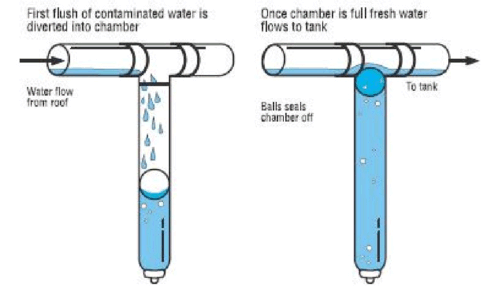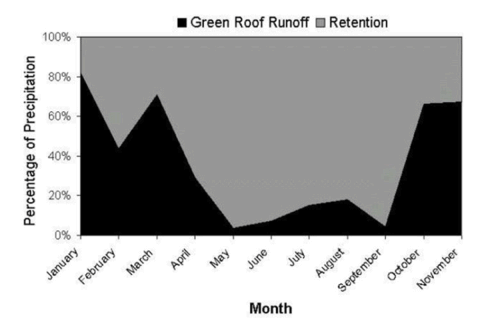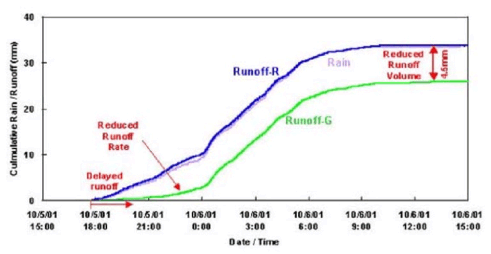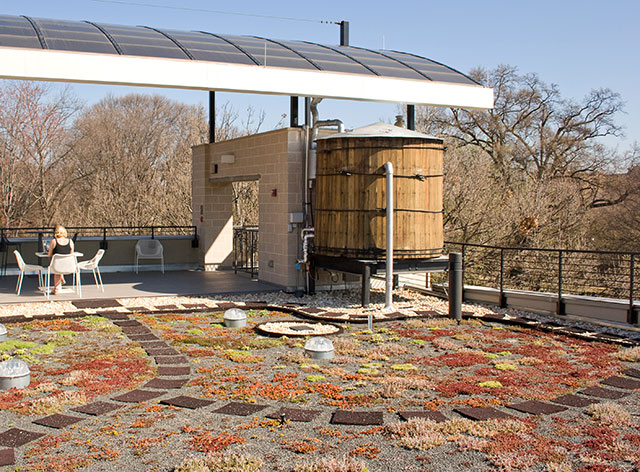By Steve Williams
I am responding to the January 31, 2010 Texas Water Development Board article “Effect of Roof Material on Water Quality for Rainwater Harvesting Systems” that has been resurfacing around the Internet lately. I am glad the article has been covered so well, because it brings concerns to the quality of rainwater and stirs up questions about materials used in each system. I feel the article from Texas Water Development Board is very good, and I saw a short presentation on it at the ARCSA (American Rainwater Catchment Systems Association) Conference 2010 in Austin, TX. I also heard a presentation by Dr. Peter Coombes of the University of Newcastle in Australia who has been studying first flush and rainwater harvesting for 10 years.
Roof material is important when harvesting rainwater and many of the guides discuss this. For example, wood, copper and treated asphalt are only good for irrigation purposes. Slate, concrete, metal coated or painted, and most vinyl/rubberized are excellent for all uses. Asphalt shingles are acceptable as long as they are not treated with a chemical.
However, gutters, sealers, pipes, components and the tank material are as important for potable water and other uses. All of the materials in contact with the water should not contain material that could taint the water. The design of the system is important as well, but the first flush cleans the environmental residue that lands on the roof and is washed off during the beginning rain. A first flush water diverter is a simple downpipe attachment that collects the first “flush” of rainwater most likely to carry contaminants (and mosquito larvae for that matter) from the roof. This is a very important step in removing contaminates that will spoil the water and reduce it uses.

Graphic Source: infonet-biovison.
Most contamination comes from the local environment such as construction sites, industry, agriculture, trees, birds… if properly diverted few organics or contaminates end up in the tank. When the summer heat raises the water temperature in above ground tanks the water stays clean. Underground tanks stay cooler removing the algae problem, but the water can still be tainted from contaminants.
As for collecting water from greenroofs, there are three reasons I suggest not to do it. First, as the Texas study pointed out there can be organic material that could taint the water as well fertilizers or pesticides which may be used. EPA has studied the water runoff as well in this study: Green Roofs for Stormwater Runoff Control, 2009 by Robert D. Berghage, David Beattie, Albert. R. Jarrett, Christine Thuring, and Farzaneh Razae, exerpt below:
Stormwater runoff samples were collected from green and flat asphalt roofs and analyzed for water quality parameters. Twenty three samples were evaluated for pH, EC, color, turbidity, and nitrate. A limited set of five samples was evaluated for additional nutrients, hardness, salts and metals. This small sampling of green roof runoff indicated the runoff was similar to what might be expected as leaching from any other planted system in the landscape.
I believe in storing the water as cleanly as possible, eliminating health risk and expanding the amount of uses for the water including emergency uses. Properly stored rainwater can be used as potable or easily treated when no other water is available.
Graphic Source: Green Roofs for Healthy Cities
Second, the amount of water that can be collected is significantly reduced, because of the storage capacity of the roof when the soil is dry. Greenroofs are a best management practice in reducing and delaying stormwater runoff.
By using greenroofs as rainwater capture areas, the amount of water will be reduced, making the system cost less efficient and difficult to gauge water collection.

Retention and runoff from green roofs (percentage of average monthly precipitation) from Green Roofs for Stormwater Runoff Control.
(Note the higher retention in the summer months.)
Finally, there are new plumbing codes being written to guide designers and installers to put systems in correctly. The IGCC code (International Green Construction Code from the International Code Council), seen below, does not allow for water to be collected by greenroofs for potable water use:
Lead, chromium or zinc based paints are not permitted on rainwater collection surfaces. Flat roofing products shall be certified to NSF P151. Rainwater shall not be collected from vegetated roof systems.
As for collecting rainwater from greenroofs, if used for irrigation it would be fine, but it should be kept separate from other uses. I feel it might be better to pipe it to a rain garden or other landscaping needs.
In conclusion, my goal is to collect potable quality rainwater and be able to use it for a variety of uses gardening, cleaning, drinking as well as emergency needs when municipal water is not available. It makes sense to collect the most water from the cleanest sources for multiple uses and less maintenance.
Steve Williams
 Greenroofs.comConnecting the Planet + Living Architecture
Greenroofs.comConnecting the Planet + Living Architecture










Bob Carpenter
Hi Steve. I have met with Bob Drew in Atlanta and would very much like to meet with you. I am the SE Regional Manager for IAPMO and we have the only published green plumbing code that addresses grey water and rainwater. Please contact me
John Hamilton
This is a great idea! What better way to put roofing to work than to have it collect water? Even AZ roofing could do this.
Sky Gardens » Blog Archive » Greenroofs.com’s “This Week in Review†on GreenroofsTV: May 20th, 2011
[…] Make sure to check out our latest Guest Blog post on the Sky Gardens Blog, “Rainwater Harvesting on Greenroofs?†by Steve […]
Kent Thompson
Steve,
I appreciate your thoughtful comments. I must first admit my bias in that I am a vegetated roofing contractor. That being out of the way, I’d like to follow up on your post. I believe we share the same goal, to make sure that whatever the application, rainwater collection is effective and most of all, safe. My reading of the article is that the water quality problem with green roofs (dissolved organic carbon) is only an issue when the water is treated with chlorine. From other sources I’ve read (the texas manual on rainwater harvesting) chlorine is not a preferred treatment method for rainwater, with activated carbon and reverse osmosis filtration available. For some of the other contaminants, the green roof runoff had the lowest concentrations. I share your concern with the use of fertilizers and pesticides, however, this seems like a problem over which the building operator has control.
Your second point, that a green roof’s retention of rainwater reduces the amount of possible rainwater collected is a great one. The technologies do work against each other. I imagine in many climates, it doesn’t make sense to use them together.
Your third point, that the IGCC code does not recommend it, seems like a great practical point from a code compliance standpoint. I’d be interested to know why the IGCC included that line.
Sorry if my comment is overly long, but I’ve been thinking about this subject lately, and was excited to see your article online. Thanks!
Drainman
Is the cost of rain harvesting worth it over a short period